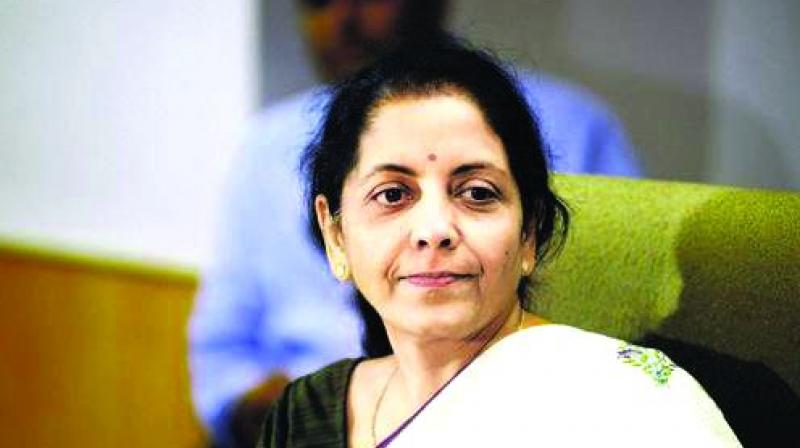Union Budget: India aims for a USD 5 trillion economy
Outlining the future roadmap, the Survey was tabled by finance minister Nirmala Sitharaman in the Rajya Sabha on Thursday.

New Delhi: A day before the Union Budget is presented to Parliament, the Economic Survey 2019 has predicted India’s gross domestic product (GDP) will grow at seven per cent in the financial year 2019-20, as against 6.8 per cent in the previous fiscal, reflecting a recovery in the economy after a deceleration in the growth momentum in 2018-19. It said the country needs attain a growth rate of eight per cent to make India a $5 trillion economy by 2025.
Outlining the future roadmap, the Survey was tabled by finance minister Nirmala Sitharaman in the Rajya Sabha on Thursday.
However, the survey emphasises mostly on jobs creation, private investments, exports, infrastructure, ensuring the delivery of beneficiary schemes, etc among key issues the country is facing amid the slowdown.
The Economic Survey, authored by chief economic adviser Dr Krishnamurthy Subramanian, also referred to Prime Minister Narendra Modi’s vision of making India a $5-trillion economy by 2025, and said that to achieve this target the country needs to grow at eight per cent.
The survey also put the general fiscal deficit at 5.8 per cent for 2018-19, against 6.4 per cent in 2017-18. At 5.8 per cent, the deficit is up from the revised budget estimate of 3.4 per cent and a cause of concern for the government. “The real GDP growth, which slowed to a five-year rate of 5.8 per cent in the first three months of 2019 — well below China’s 6.4 per cent, is expected to rise to seven per cent in 2019-20. GDP growth was 6.8 per cent in 2018-19, down from 7.2 per cent in 2017-18,” it said.
On the fiscal deficit, it was at 3.4 per cent for 2018-19, but analysts expected a short-term realignment of the fiscal consolidation map with the deficit targets being marginally raised for the current fiscal in the Budget for 2019-20 to be presented by Ms Sitharaman on Friday.
However, Mr Subramanian called for the government to stick to the fiscal consolidation path or risk crowding out investment due to large public borrowings. Besides, the survey also said investments, especially private investment, is the “key driver” that boosts demand, creates capacity, increases labour productivity, introduces new technology, allows creative destruction and generates jobs. “The gradual decline in the non-performing assets (NPAs) should help push the capital expenditure cycle in both banking and non-banking financial sectors in the country,” the survey added.
However, Mr Subramanian said at a media briefing that structural reforms, such as in the labour sector, are needed to bring in the much-needed private investment. “We will be sticking to the fiscal path which has been laid out, if private investment has to increase, it cannot be allowed to be crowded out by public investment,” Mr Subramanian said.
“Investment as a per centage of GDP has to be more than 30 percentage points. We need to invest at close to 35 percentage points going forward, in order to sustain the virtuous cycle triggered by investment. Let private investment increase, this will make firms more productive, bringing jobs and increasing exports, making firms able to compete in international markets; this will raise demand and further investment,” the CEA added.
On the micro, small and medium enterprises sector, the survey emphasised that the bulk of job creation would come from this segment. Highlighting the immense potential of data of societal interest, the survey said the data should be “of the people, by the people, for the people”. The survey also flagged the need to prepare for ageing of the population, necessitating more healthcare investment and raising the retirement age in a phased manner.

